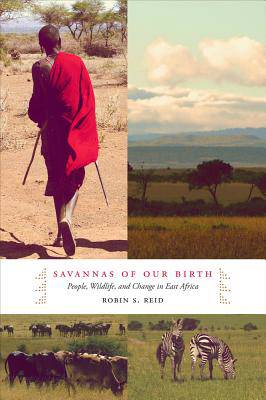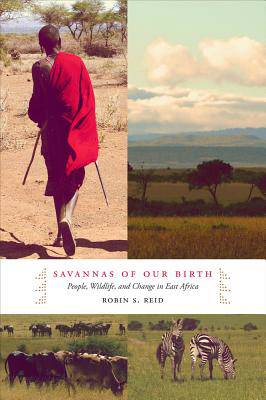
- Afhalen na 1 uur in een winkel met voorraad
- Gratis thuislevering in België vanaf € 30
- Ruim aanbod met 7 miljoen producten
- Afhalen na 1 uur in een winkel met voorraad
- Gratis thuislevering in België vanaf € 30
- Ruim aanbod met 7 miljoen producten
Zoeken
€ 52,95
+ 105 punten
Omschrijving
This book tells the sweeping story of the role that East African savannas played in human evolution, how people, livestock, and wildlife interact in the region today, and how these relationships might shift as the climate warms, the world globalizes, and human populations grow.
Our ancient human ancestors were nurtured by African savannas, which today support pastoral peoples and the last remnants of great Pleistocene herds of large mammals. Why has this wildlife thrived best where they live side-by-side with humans? Ecologist Robin S. Reid delves into the evidence to find that herding is often compatible with wildlife, and that pastoral land use sometimes enriches savanna landscapes and encourages biodiversity. Her balanced, scientific, and accessible examination of the current state of the relationships among the region's wildlife and people holds critical lessons for the future of conservation around the world.
Our ancient human ancestors were nurtured by African savannas, which today support pastoral peoples and the last remnants of great Pleistocene herds of large mammals. Why has this wildlife thrived best where they live side-by-side with humans? Ecologist Robin S. Reid delves into the evidence to find that herding is often compatible with wildlife, and that pastoral land use sometimes enriches savanna landscapes and encourages biodiversity. Her balanced, scientific, and accessible examination of the current state of the relationships among the region's wildlife and people holds critical lessons for the future of conservation around the world.
Specificaties
Betrokkenen
- Auteur(s):
- Uitgeverij:
Inhoud
- Aantal bladzijden:
- 416
- Taal:
- Engels
Eigenschappen
- Productcode (EAN):
- 9780520273559
- Verschijningsdatum:
- 1/10/2012
- Uitvoering:
- Hardcover
- Formaat:
- Genaaid
- Afmetingen:
- 155 mm x 231 mm
- Gewicht:
- 657 g

Alleen bij Standaard Boekhandel
+ 105 punten op je klantenkaart van Standaard Boekhandel
Beoordelingen
We publiceren alleen reviews die voldoen aan de voorwaarden voor reviews. Bekijk onze voorwaarden voor reviews.











